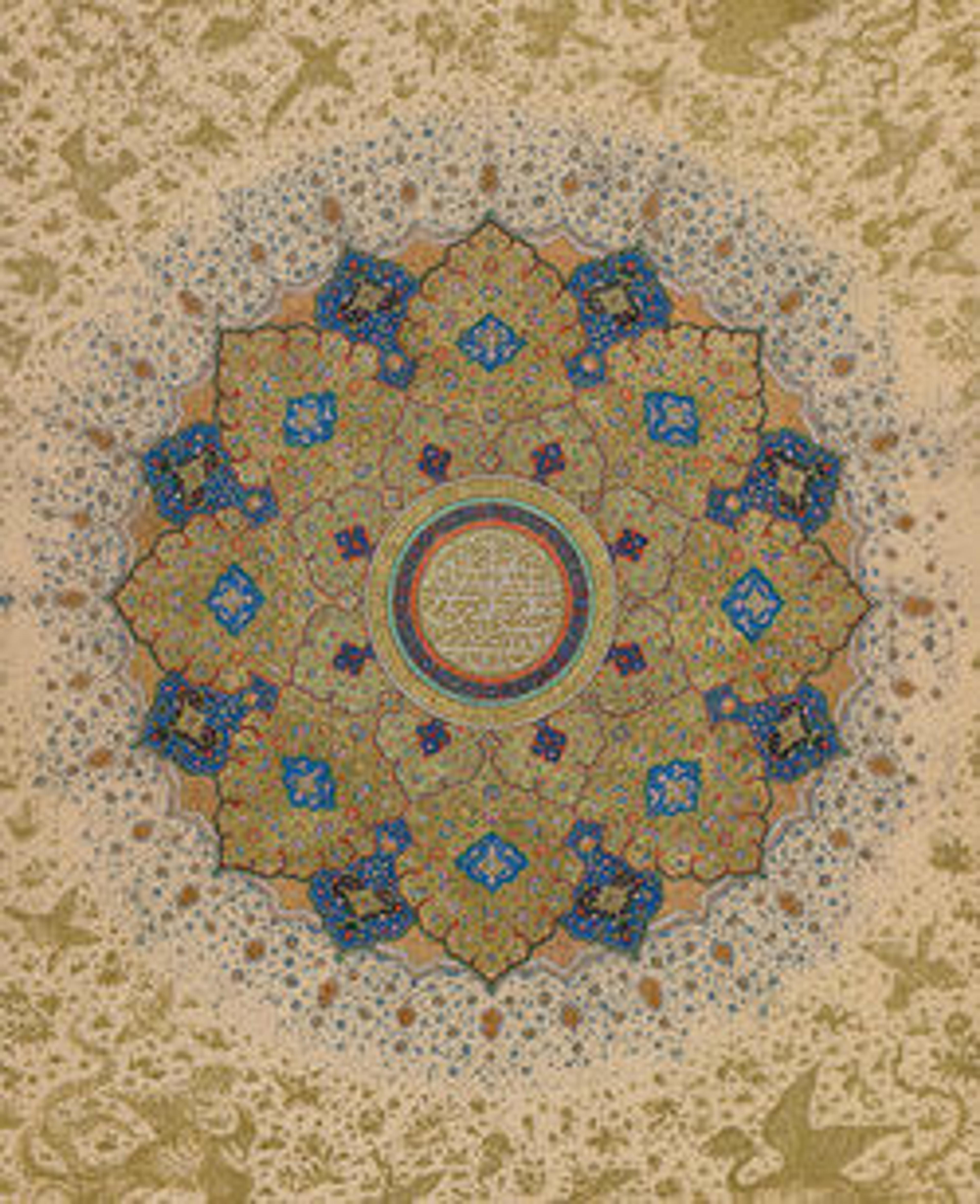Tile
This tile matches a border frieze adorning the portal of the tomb of Sultan Mehmed I (r. 1403–21) in Bursa, where monuments were badly damaged in an 1855 earthquake. It has a deeply carved pattern of lattices formed by pairs of undulating vine scrolls that meet at regular intervals along the centerline. The interlacing of the arabesque lattices is complex, but clarity is achieved through the use of different colored glazes. The tile predates the period, later in the fifteenth century, of widespread Chinese influence on Ottoman Turkish ceramics. In its deep relief and choice of colors, it exhibits similarities to tiles of Timurid Central Asia dating from the late fourteenth century, a resemblance probably explained by the documented presence of Persian tileworkers in Bursa at that time.
Artwork Details
- Title: Tile
- Date: dated 824 AH/1421 CE
- Geography: From Turkey, Bursa
- Medium: Tempered earthenware; molded; polychrome glazed within black wax resist outlines (cuerda seca technique); gilded
- Dimensions: H. 11 1/2 in. (29 cm)
W. 6 3/4 in. (17.2 cm)
D. 1 1/2 in. (3.8 cm) - Classification: Ceramics-Tiles
- Credit Line: Purchase, Friends of Islamic Art Gifts, 1998
- Object Number: 1998.246
- Curatorial Department: Islamic Art
More Artwork
Research Resources
The Met provides unparalleled resources for research and welcomes an international community of students and scholars. The Met's Open Access API is where creators and researchers can connect to the The Met collection. Open Access data and public domain images are available for unrestricted commercial and noncommercial use without permission or fee.
To request images under copyright and other restrictions, please use this Image Request form.
Feedback
We continue to research and examine historical and cultural context for objects in The Met collection. If you have comments or questions about this object record, please contact us using the form below. The Museum looks forward to receiving your comments.
